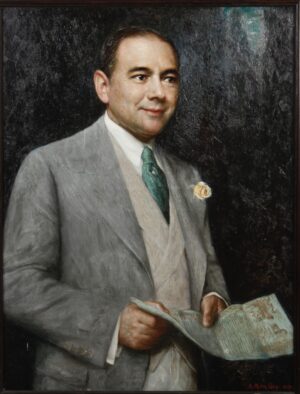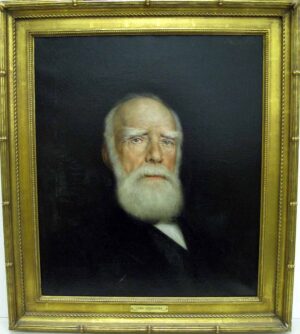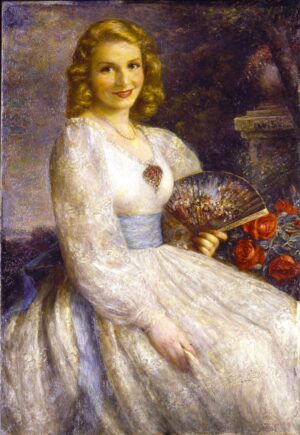
O’BRIEN, Judge Morgan Joseph (1906)
Description:
Bust-length portrait.
Location:
Present Whereabouts Unknown.
Exhibition:
‘Portraits by Contemporary Artists’, Union League Club, March 1906.
M. KNOEDLER & CO., 355, Fifth Avenue (corner of Thirty-fourth Street), New York, December 3 – 16, 1906, No. 6.
Bibliography:
American Art News, Vol. 4, No. 23, March 17, 1906, New York, p. 2
New York Herald, December 5, 1906
Brooklyn Eagle, December 5, 1906
New York Herald, December 8, 1906
Town & Country, New York, December 15, 1906
The sitter was born on April 28, 1852 in New York City to an Irish immigrant family. He was educated at the city public schools and earned degrees from St. John’s College, now Fordham University, in 1872, the College of St. Francis Xavier in 1873 and Columbia University Law School in 1875. O’Brien was admitted to the bar in 1875 and began practicing law, specializing in corporate law. Hewitt appointed O’Brien to the position of corporation counsel for the city of New York in 1887. He became Judge of the Supreme Court of New York twice, from 1887 to 1901, and 1901 to 1915. O’Brien was a prominent Catholic layman and was knighted by the Pope.
He was married to Rose M. Crimmins and had ten children: Genevieve (Mrs. Lyttleton Fox), Rosalie (Mrs. Henry James), Madeleine (Mrs Stuart Duncan Preston), Morgan J. Jr., Esmond P., Justin C., Estelle (Mrs. William F. Cogswell) Maude (Mrs. Gerald Dempsey), and Kenneth. He was a counsel to the law firm of Conboy, Hewitt, O’Brien and Boardman, and trustee of the Provident Loan Society of New York. In 1930, he lived at 729 Park Avenue, New York. He died on June 16, 1937.
—
As one of 27 portraits displayed at the Union League Club in March 1906, American Art News, Vol. 4, No. 23, March 17, 1906, New York, p. 2, described this as, ‘A. Muller-Ury’s excellent bust of Judge O’Brien.’
Among the other pictures displayed were a Lenbach portrait of Bismarck lent by Joseph Pulitzer, Chase’s ‘strong, delightful, and refined double portrait of Mmes Oscar L. Livingston and James M. Sullivan,’ and Caroll Beckwith’s ‘strong three-quarter length of Mr. Richart Ewart’, and Irving R. Wiles’ ‘three quarter-length standing of Mrs. Hollister – a strong canvas.’




